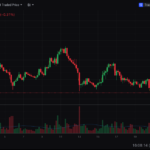Hodling—derived from a famous typo for “holding”—has become a cornerstone strategy for many cryptocurrency enthusiasts. While it may seem as simple as buying and never selling, the philosophy behind hodling is rooted in long-term conviction and a belief in the future value of an asset. Let’s dive into the essence of this strategy, why it works, and how traders can use it effectively.
What Is Hodling?
Hodling is a trading strategy that involves buying an asset and holding onto it for an extended period, regardless of market fluctuations. This approach is particularly popular in the cryptocurrency world, where volatility often leads to significant price swings. Hodlers believe that short-term market noise is irrelevant in the face of long-term growth potential.
This strategy contrasts with day trading or swing trading, where traders attempt to profit from short-term price movements. Instead, hodling is about patience, resilience, and trust in the asset’s future performance.
Why Hodling Works
- Avoiding Emotional Trading: Markets are emotional by nature, and many investors succumb to fear or greed during volatile times. Hodling removes the temptation to sell during dips or buy excessively during surges, helping investors avoid costly mistakes.
- Compounding Returns: Assets like Bitcoin and Ethereum have demonstrated exponential growth over the years. By hodling, investors benefit from compounding returns as their assets appreciate over time.
- Reducing Transaction Costs: Frequent trading incurs fees that can eat into profits. Hodling eliminates this issue, allowing investors to maximize their returns.
- Aligned with Market Trends: Many assets, particularly cryptocurrencies, experience bull cycles that can last years. Hodling ensures that investors capture these long-term trends rather than missing out by exiting too early.
How to Implement a Hodling Strategy
- Choose the Right Asset: Hodling works best with assets that have strong fundamentals and long-term growth potential. Research the team, use case, and market positioning of the asset before investing.
- Set a Time Horizon: Decide how long you’re willing to hold. For many, this could mean several years or even decades, depending on the asset and market conditions.
- Ignore Market Noise: The key to hodling is resilience. Short-term dips and corrections are part of the journey. Trust in your research and the asset’s long-term potential.
- Dollar-Cost Averaging (DCA): Combine hodling with DCA by investing a fixed amount regularly. This approach reduces the impact of market volatility and averages your entry price over time.
- Secure Your Investment: For hodlers, security is paramount. Use hardware wallets and avoid leaving your assets on exchanges to protect them from hacks.
The Risks of Hodling
While hodling is a powerful strategy, it’s not without risks:
- Market Uncertainty: Long-term success depends on the chosen asset’s ability to sustain growth. Not all assets will thrive indefinitely.
- Opportunity Cost: Tying up funds in one asset may mean missing other lucrative opportunities.
- Emotional Toll: Watching your portfolio decline during bear markets can test your conviction.
Success Stories of Hodling
Hodling has produced some of the most significant gains in financial history. Early Bitcoin adopters who held through multiple bear markets have seen returns that traditional markets could never match. The key takeaway? Patience pays off.
Conclusion
Hodling is more than just a strategy; it’s a mindset. By focusing on long-term growth and ignoring short-term volatility, investors can achieve significant financial gains. However, success requires research, patience, and emotional discipline.
Disclaimer: This article is for informational purposes only and does not constitute financial advice. Always consult with a financial advisor before making investment decisions.







